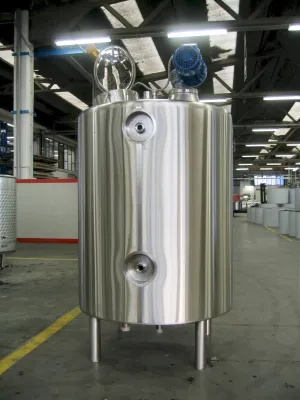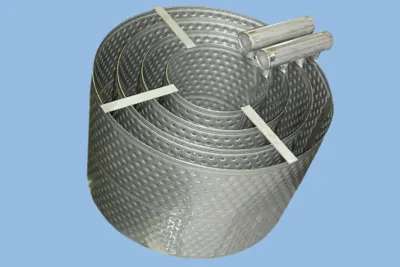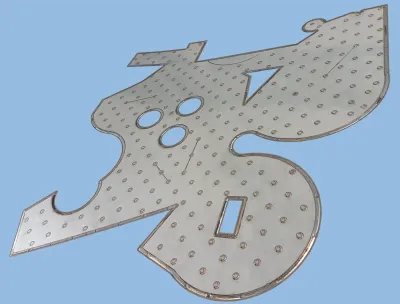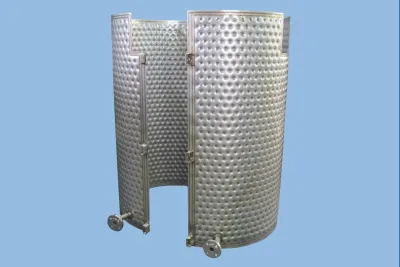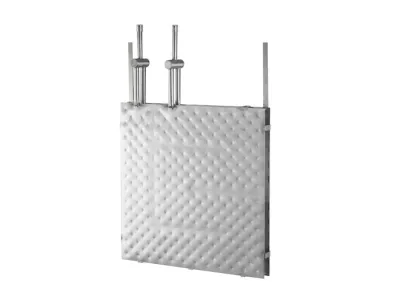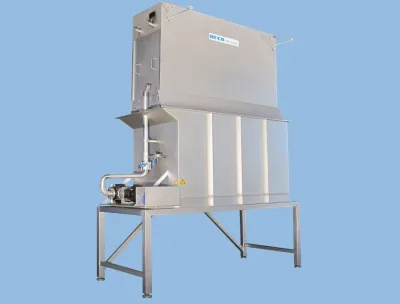BUCO DIMPLE PLATES PILLOW PLATES
DIMPLE PLATES - PILLOW PLATES
What Are Dimple Plate - Pillow Plate Heat Exchangers?
A single or double welded pillow plate is made of two metal sheets of either a different or the same wall thickness, welded together by using laser or resistance welding. By a special inflation process, fluid channels are created between these two heat exchange plates. These plates are expanded until the desired and calculated channel height. The channel height describe the maximum space between the welded together metal sheets. All single and double embossed pillow-plate heat exchangers profiles and wall thicknesses are selected for throughput, allowable working pressure and pressure drop requirements from us as pillow plates manufacturers.
When it comes to pillow plates, there are two main types to consider: single-embossed and double-embossed. Although both have their applications, single-embossed plates are commonly used as the double walls of jacketed vessels. These plates are designed with a thicker base plate and a thinner top plate. As a result, the top plate deforms while the base plate remains unaffected. With this knowledge, manufacturers can create specialized pillow plate heat exchangers with ease.
As industries continue to strive for maximum efficiency, the use of pillow plate heat exchangers has become increasingly popular. These heat exchangers are equipped with innovative "pillow" seam weldings, which provide targeted flow guidance in the channels of the pillow plate. In situations where fluid velocity or distribution is a concern, these weldings can be the perfect solution. Recently, a method for obtaining flow guidance by cushions in the channels between adjacent pillow plates has been proposed. This exciting development has the potential to improve the performance of heat exchangers even further, enabling industries to operate with greater efficiency and reduced costs.
How does a Pillow Plate Heat Exchanger work ?
The connecting pipe work to the single and double embossed pillow plate has to be laid in a way to ensure that tensions due to thermal and mechanical expansion will not lead to damage of the plate connections. The weight of the connecting pipe work has to be supported by suitable supports. If not included in the scope of delivery, we recommend as pillow plate manufacturers the use of expansion bends and/or expansion joints. Connection seams that have to be welded to the connections have to be carried out and checked in accordance with valid and authorized welding procedures.
For the transfer of large amounts of heat or for a uniform temperature distribution inside a tank, it is recommended to install a double-profiled pillow plate heat exchnger directly inside the tank in the form of a heat exchange system. In tanks with agitators, the double embossed pillow plate also serve as guide surface for the flow. This contributes to the optimal mixing and to homogeneous heating or cooling.
We have a team of experienced engineers who are experts in developing specialty engineered thermal equipment that meets all our customer's needs. If you are looking for something unique, systems that provide temperature control and uniform heat transfer surfaces, get in contact with us today. Our commitment is to help you achieve efficient processing results, cost-effectiveness and minimal downtime. Call one of our specialists for reliable advice or to book an appointment now!
Optimal solution with pillow plates based on the customer’s data and requirement
Our project engineers are experts in thermodynamics and fluid mechanics, enabling them to provide the ideal solution for any heat transfer task. After a close collaboration with the customer's plant manufacturer or operator, our specialized CAD-designers will craft an optimized 2D or 3D design that meets all requirements precisely.
The pillow plate design presents a unique challenge for engineers seeking to optimize heat transfer rates while minimizing pressure loss. The complex wavy geometry of the channels within these plates can promote fluid mixing, which can be beneficial for heat transfer, but at the same time can pose challenges in reducing the formation of recirculation regions in the wake of welding spots. Fortunately, valuable information exists on fluid flow and heat transfer behavior in pillow plates, as well as correlations for calculating Darcy-Friction-Factor and Nusselt number across a wide range of geometrical parameters and process conditions. With this knowledge in hand, engineers can confidently design and optimize pillow plate systems for a variety of applications.
Our pillow plates are expertly produced on advanced laser welding machines, while resistance welding is an option for projects that require specialized materials. Ensuring the highest quality products possible, our team of European welders monitor and supervise every stage during production. We offer top-of-the line pressure equipment components certified by 2014/68/EU with a TR CU certificate as well as adherence to ASME standards in order to meet any required needs across industries.
Pillow Plate heat exchange panel welding contours in any shape
As industries continually search for new ways to optimize their processes, pillow-plate heat exchangers are emerging as a highly sought-after solution. Compared to traditional heat exchangers, they are relatively new, but their unique "pillow-shaped" design provides greater flexibility and efficiency in heating and cooling systems. What sets them apart is their ability to serve as both plate-type heat exchangers and jackets for vessels. As a result, they are becoming increasingly implemented in the process industry. These fully welded heat exchangers represent a highly versatile technology that is changing the game for many businesses.
CNC-controlled laser welding equipment enables us to produce pillow plates with a variety of shapes, from the simplest rectangular ones to more complex contours. Thanks to this technology we can now create cut-outs in any shape and size for pipelines or cables' feed. Additionally, it allows us flexible flow design adapted to heat transfer rate and pressure drop optimization.
With their unique design, pillow plates offer a promising alternative to conventional heat exchangers. However, their thermohydraulic performance remains relatively unexplored, leading to limited knowledge and experience with their design. In response to this challenge, the industry is actively pursuing the development of commercial software tools that will facilitate research on pillow plates. If successful, such tools could unlock new possibilities for this innovative technology, making it more widely accessible and beneficial for a range of industrial applications.
Core business of pillow plates
Our team of skilled professionals are experienced at delivering cutting-edge solutions for process engineering, thermodynamics, fluid mechanics and more. With decades of experience in the design and manufacturing heat exchange plates we remain committed to understanding individual requirements from a range of industries - so our solution meets even your most specific needs. Anywhere across the world, plant manufacturers or engineers can rely on us to provide precise analysis with tailored advice that's perfect for their heating/cooling processes.. We strive to create solutions specifically tailored to our customers' needs, balancing technical and economic considerations. With know-how gained over decades of experience in the industry, we provide comprehensive support for worldwide clients; not only during planning design but also on integration into their systems - reducing potential risks that arise from interfaces.
Pillow plates offer a versatile and flexible solution for a wide range of applications. Their impressive properties, including high geometric flexibility and adaptivity to different processes, make them ideal for various purposes. While the external surface is easy to clean and is perfect for high fouling or sanitary applications, the internal surface is not suitable for such purposes. The internal surface has fine seams around each spot weld, making it challenging to clean. Therefore, non-fouling fluids like water, steam, or refrigerants are the only suitable fluids for the internal surface. Pillow plates are an excellent choice for many industries, including food and beverage, chemical processing, energy, and many others.
Pillow-plates in heat exchanger applications?
Usually a single embossed pillow plate is mainly integrated into process tanks, bulk or pressure vessels, as well as it is integrated into cooling tables or conveyer structures, uniquely due to their one flat inside surface of the pillow plate heat exchanger.
Conversely double embossed pillow-plate heat exchangers have an unlimited access to all industries, in which cooling or heating are part of the main manufacturing process. Ordinarily a distinction is made between a pillow plate with spot patterns and those, which have a defined channel pattern.
Heat exchange surfaces are calculated due to each individual process application. Above all, the flexible design options of single and double embossed pillow plate allows tempering of products during other process steps. Although this saves a separate thermal process stage and often increases product quality. Furthermore, the large single and double embossed pillowplate heat surface ensures safe process control by controlled homogeneous temperature control.



















